Junkyard Gem: 1976 Chevrolet Sportvan Beauville 'War Pony'

For the 1971 model year, General Motors created a new G-Series family of vans, replacing the smaller forward-control Chevrolet and GMC vans of the 1964-1970 period. This bigger front-engined design proved so successful that GM stuck with it in fundamentally unchanged form for a quarter-century, with production continuing all the way through 1996. We saw a late Chevy Van cargo version in this series last fall, and now it’s the turn of an early passenger version, found in a Colorado Springs car graveyard.
I have a deep personal connection with the early Chevy Sportvan Beauville, because my parents bought one new in 1972 to move the family from Minnesota to California. That van stayed in the family for more than a decade, through the 1973 and 1979 Oil Crises that made the Malaise Era so painful, a great deal of commuting and countless vacation trips. I even managed to crash it myself as a teenager.
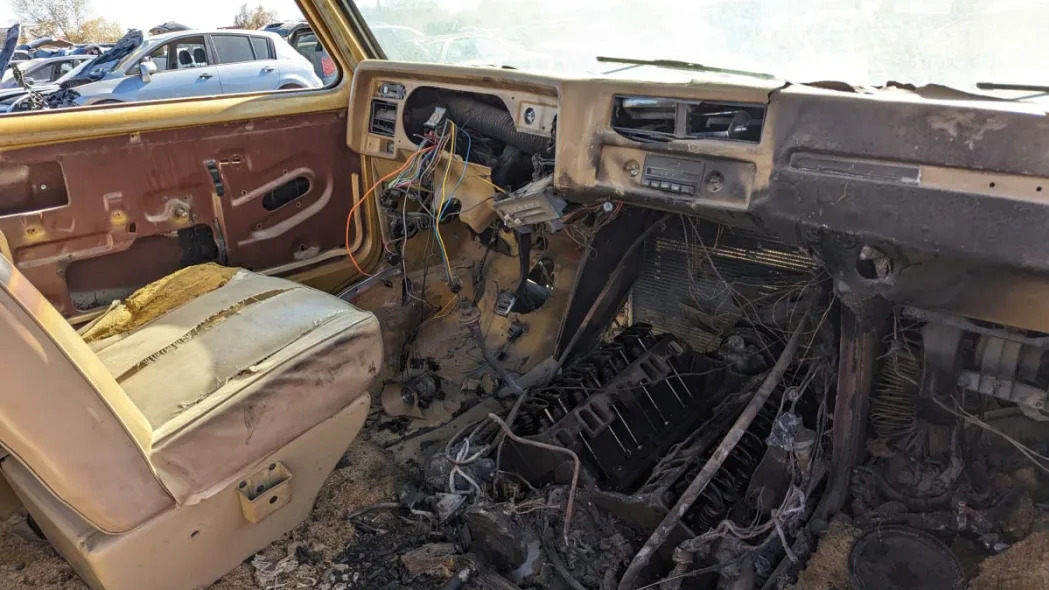
This ’76 is very similar to my family’s ’73, Quadrajet-equipped 350-cubic-inch small-block V8 engine and all.
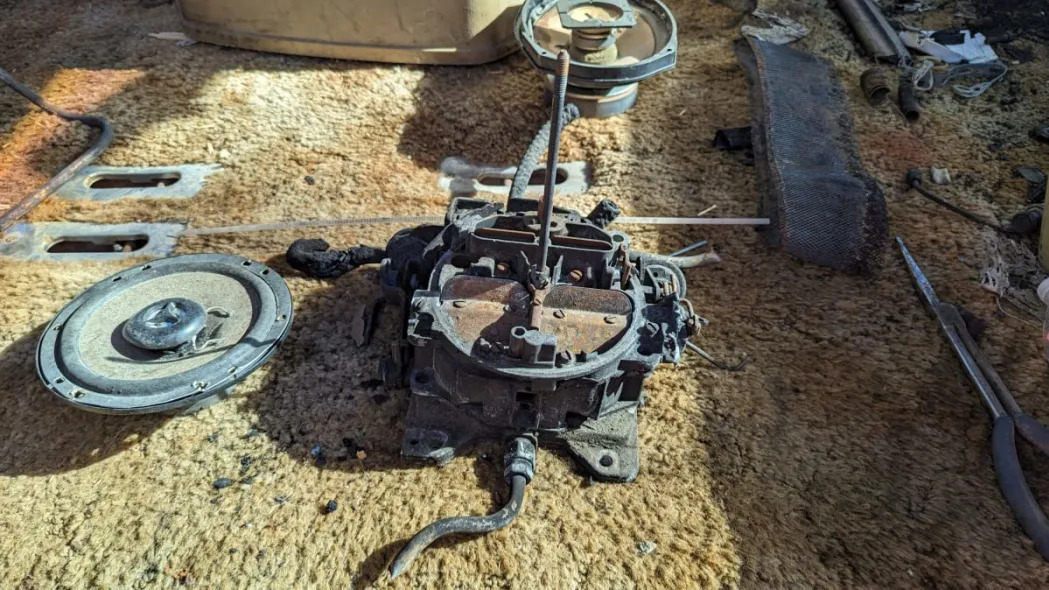
It appears that a junkyard shopper bought the four-barrel intake manifold but left the carburetor behind.
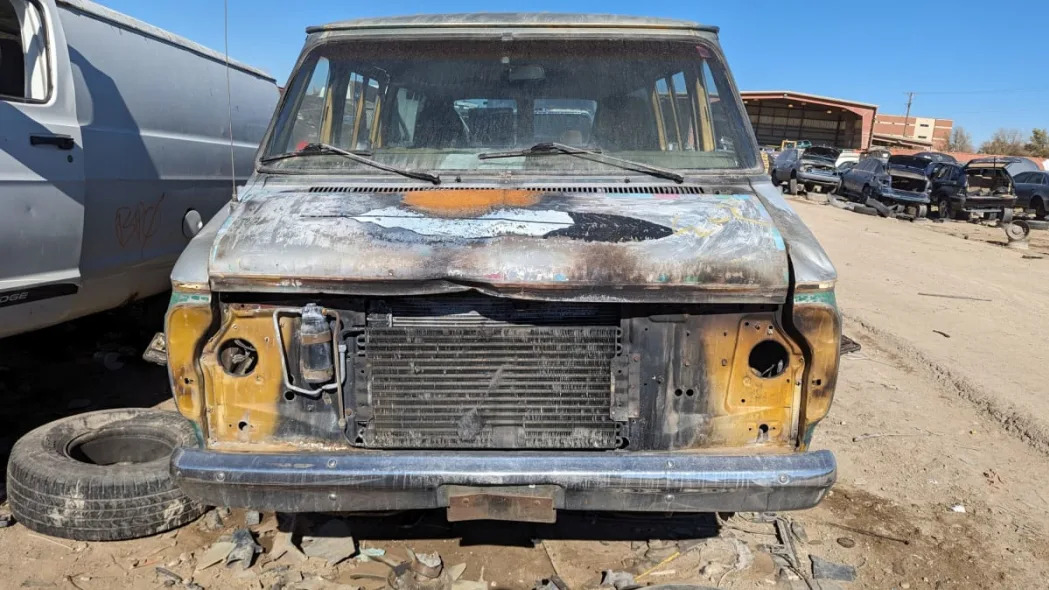
The passenger versions were badged as the Sportvan (Chevrolet) and Rally (GMC), while the cargo versions were called the Chevy Van (Chevrolet) and Vandura (GMC). The Beauville trim package (known as the STX package in the GMC world) got you a few comfort and appearance upgrades.
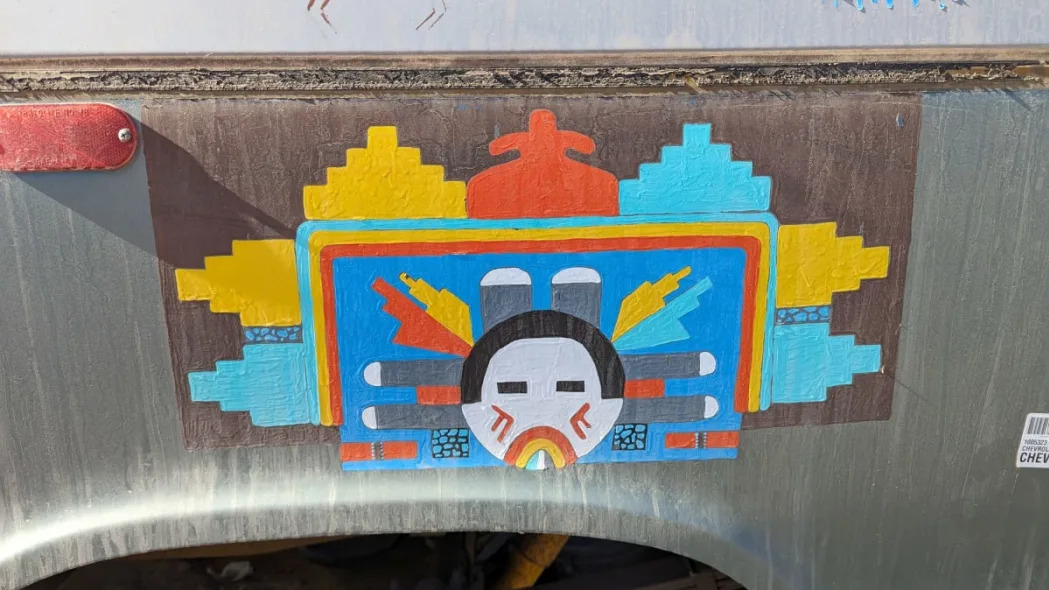
Most van customizers preferred cargo vans back in the 1970s and 1980s, because they provided more surface area for airbrush murals and bubble windows. That didn’t deter the owner of this Sportvan, who covered it in well-executed hand-painted artwork with Native American themes.
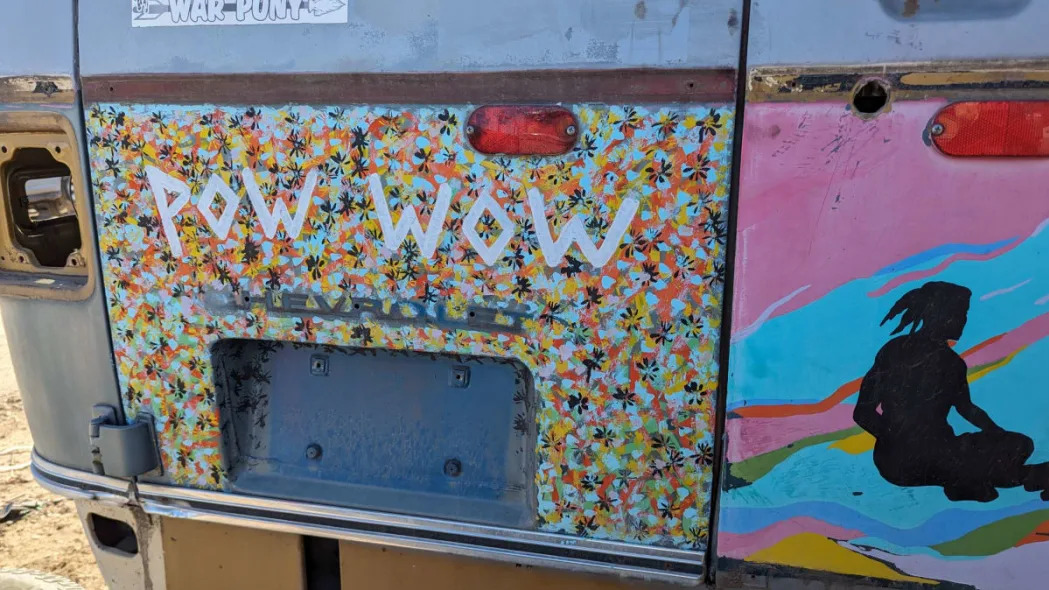
I’m guessing that this van was used for many years to transport participants and/or spectators to Pow Wows around the region. You definitely want the passenger Sportvan with three rows of bench seats for that purpose.
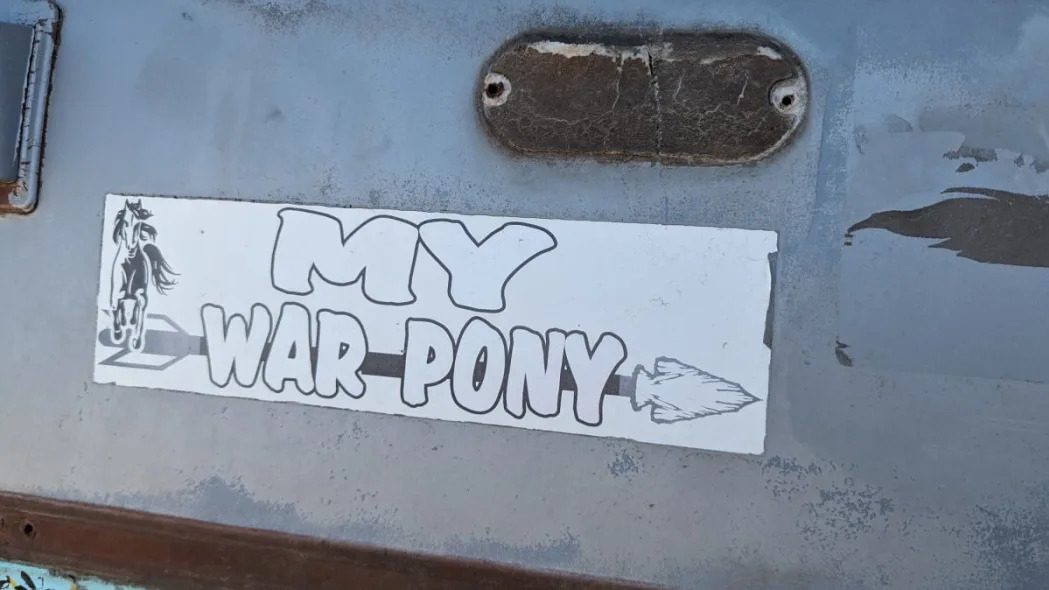
The Comanche lived in this part of Colorado for centuries, and their war ponies helped them to create a mighty empire to the south.
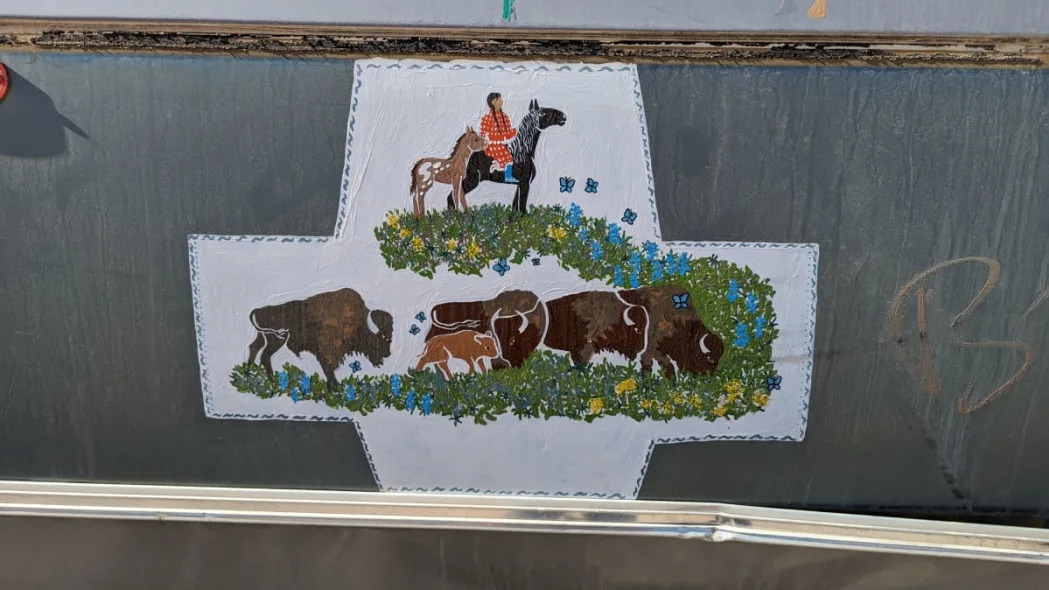
This van’s last parking spot is located where the Great Plains meet the Rocky Mountains.
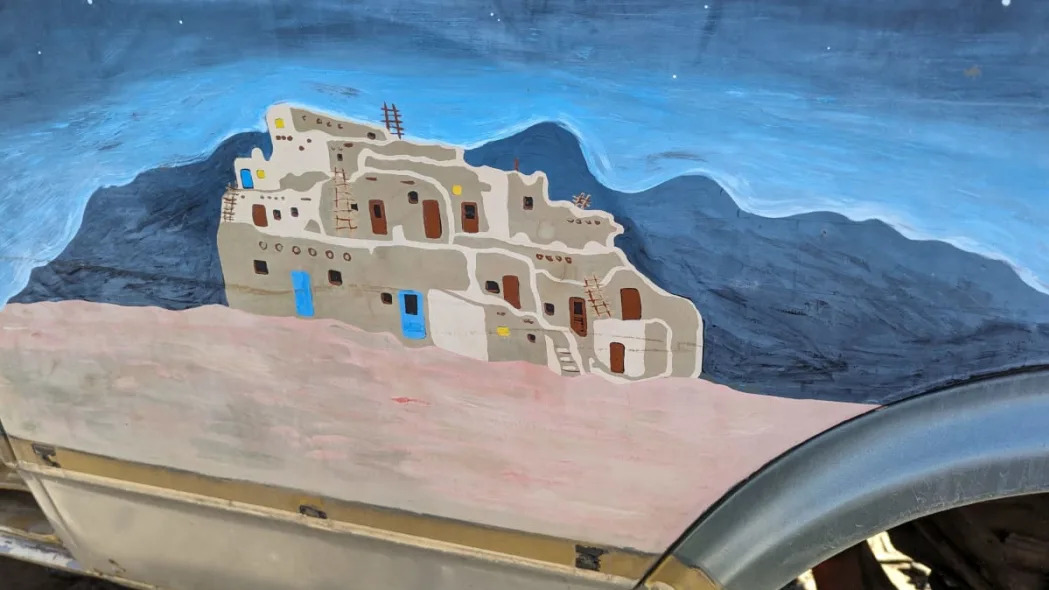
There’s artwork honoring many native peoples of the Plains and Southwest on this van. Be sure to scroll through the gallery to see the rest.
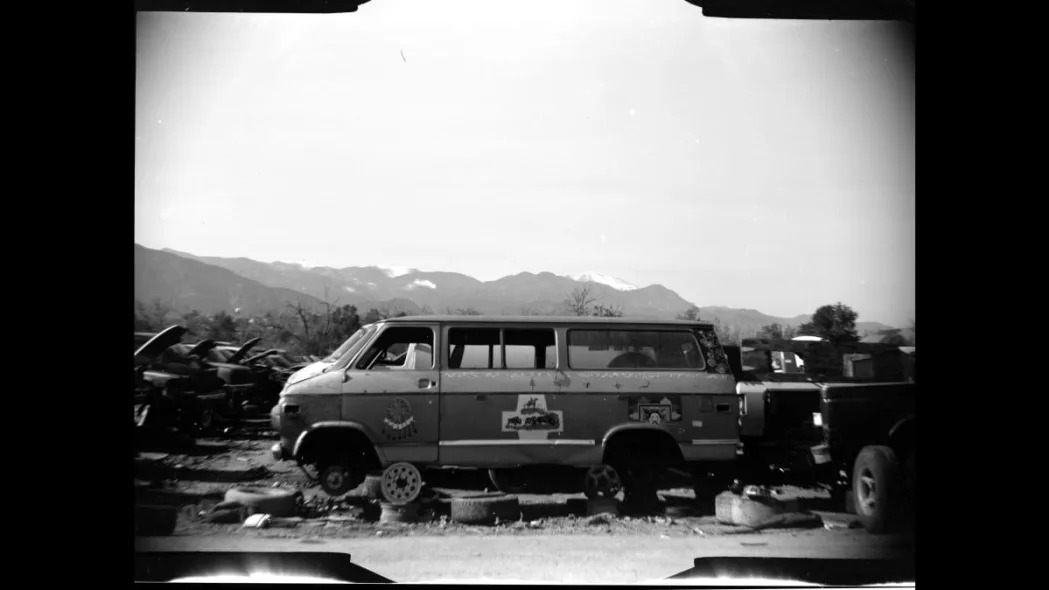
I bought a 1930s Parisian film camera to document Alpine’s Pikes Peak effort last summer, later using it to photograph this Beauville. That snow-covered peak visible behind the van (lined up with the rear wheel well) is Pikes Peak.
Grilles and drivetrain choices evolved between 1971 and 1996, but the Sportvan never changed significantly during that time.
The Vanduras and Chevy Vans got most of GM’s van advertising budget during the 1970s.







